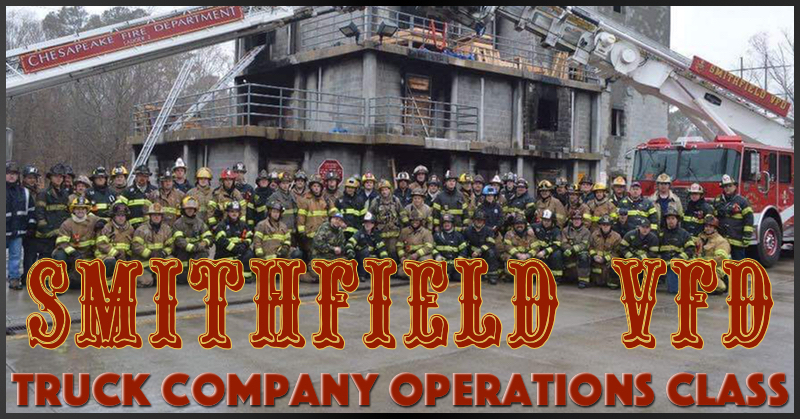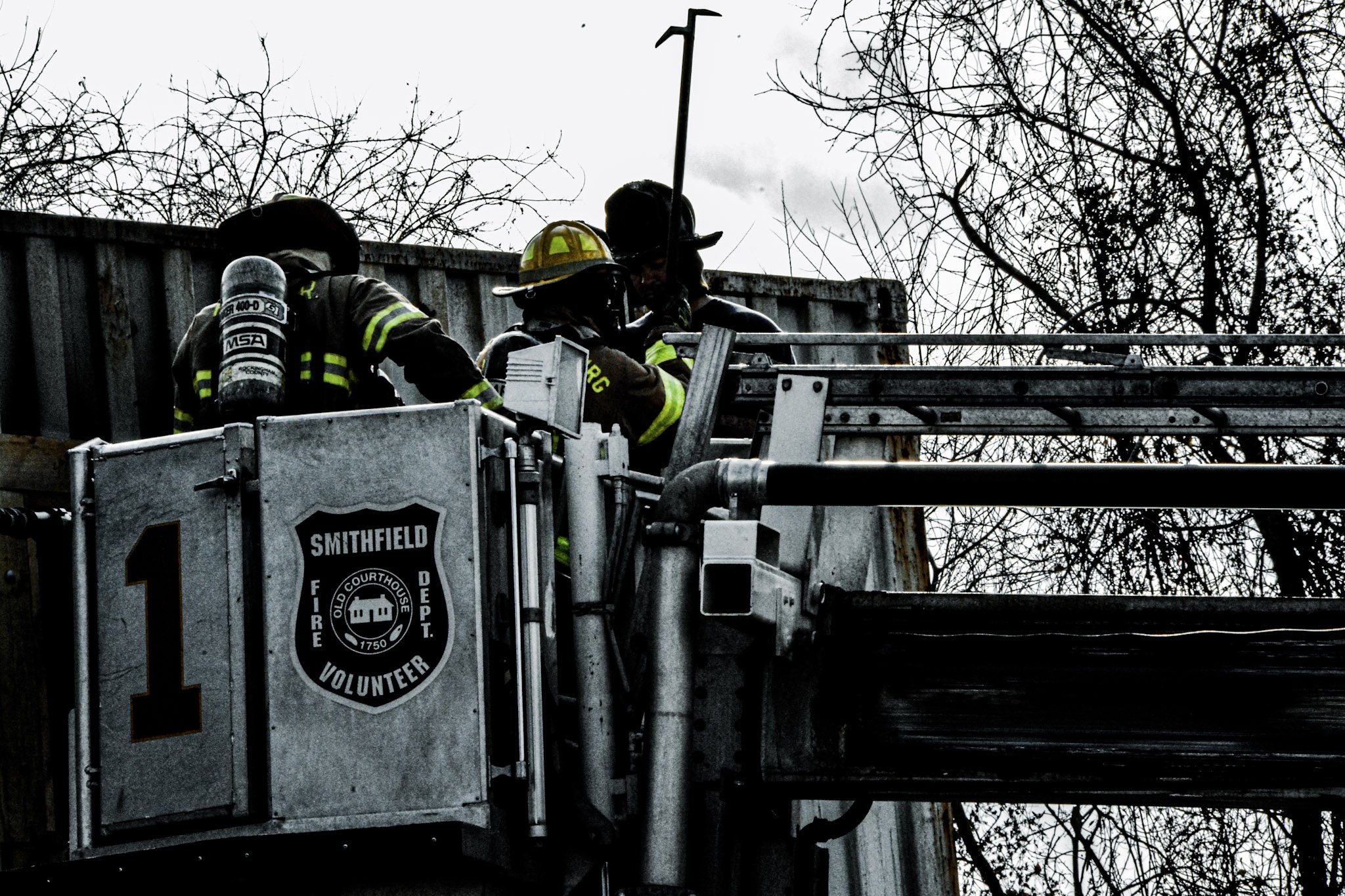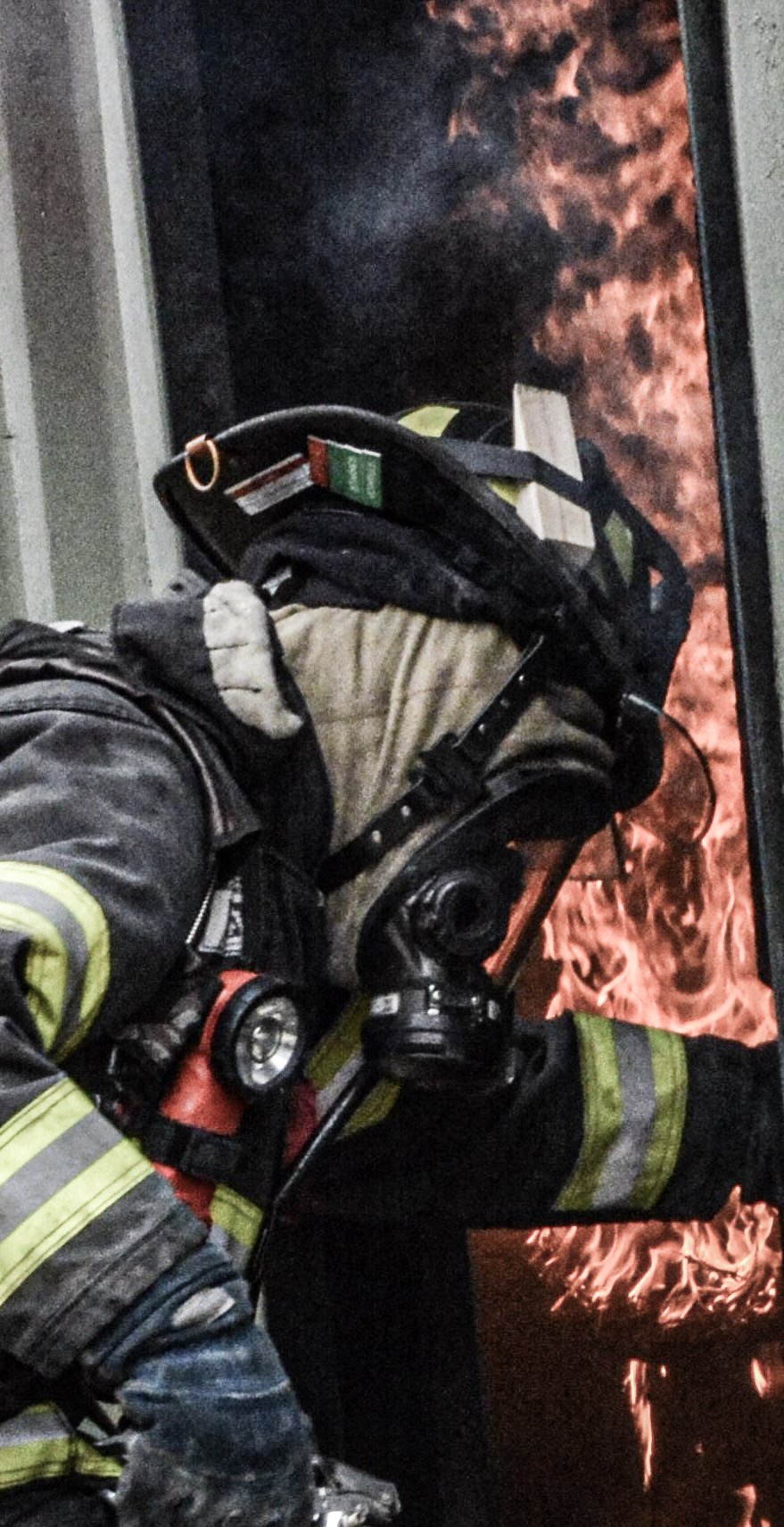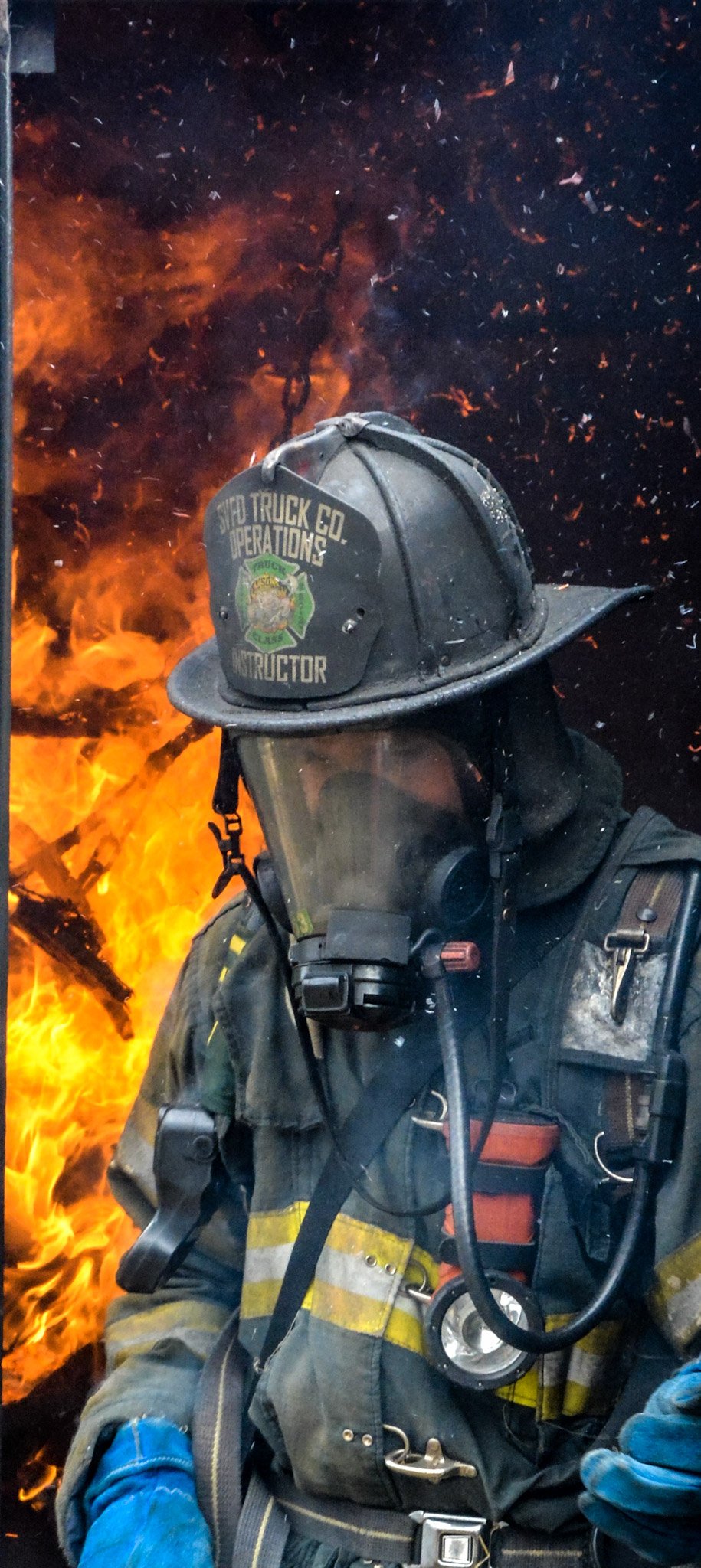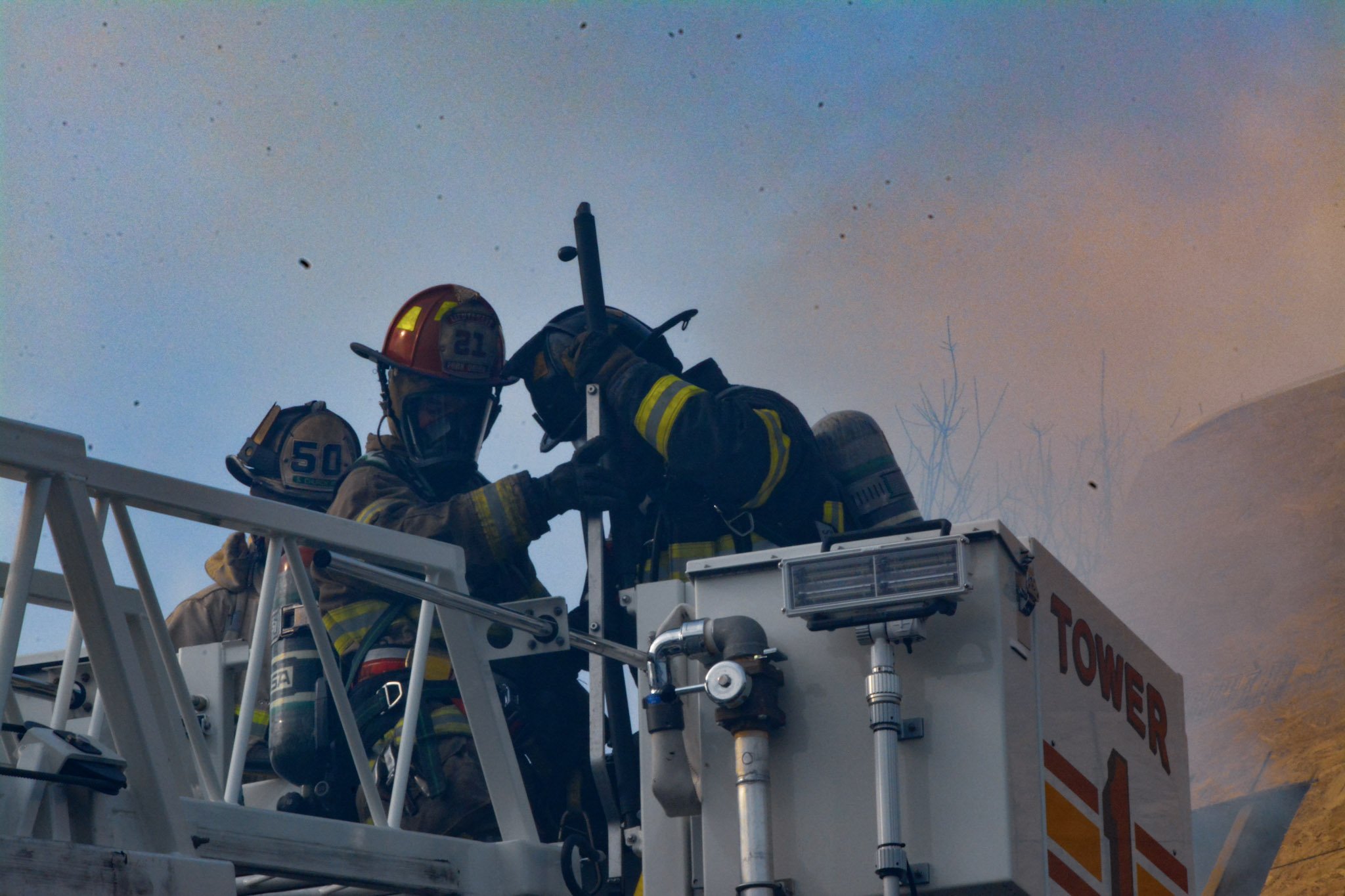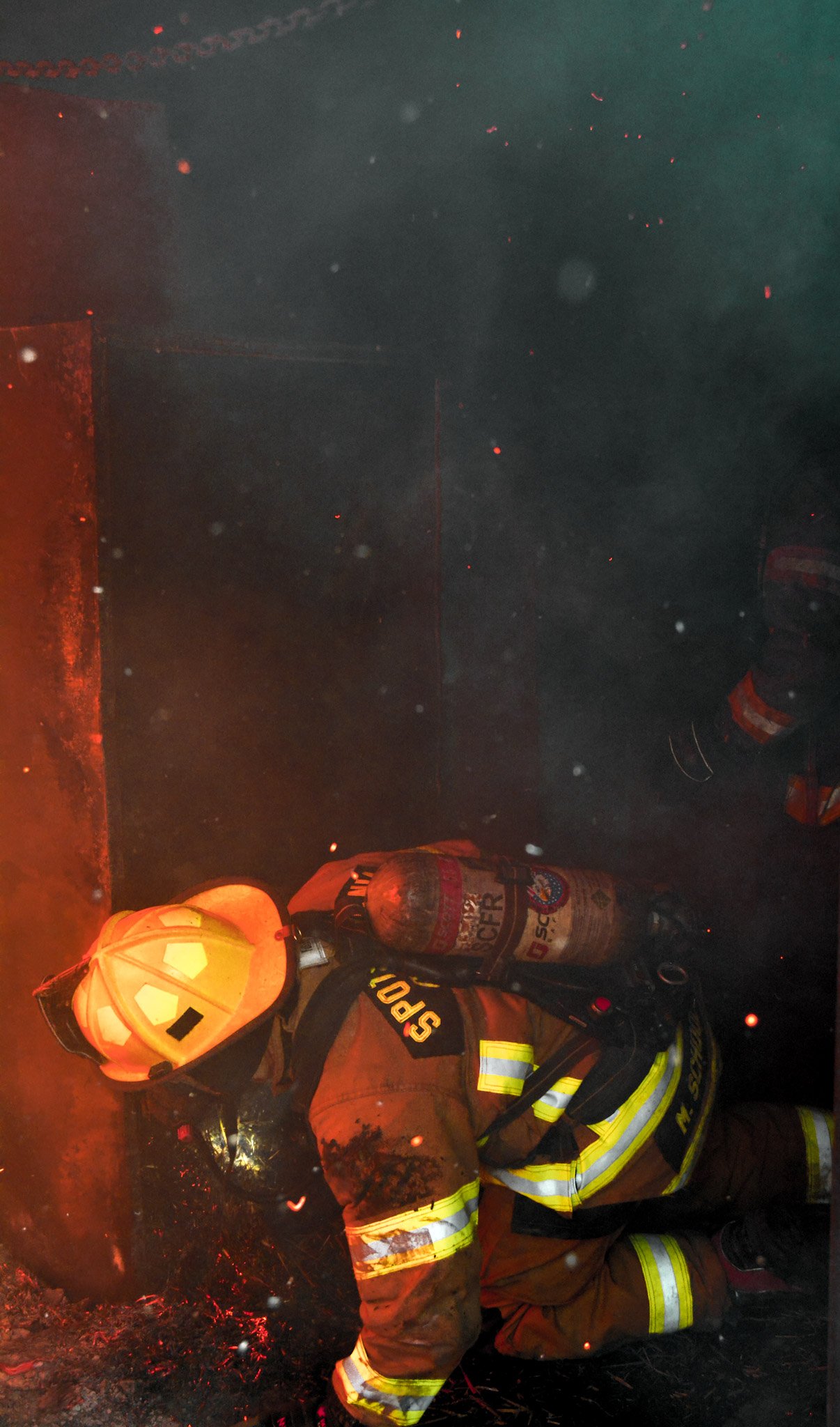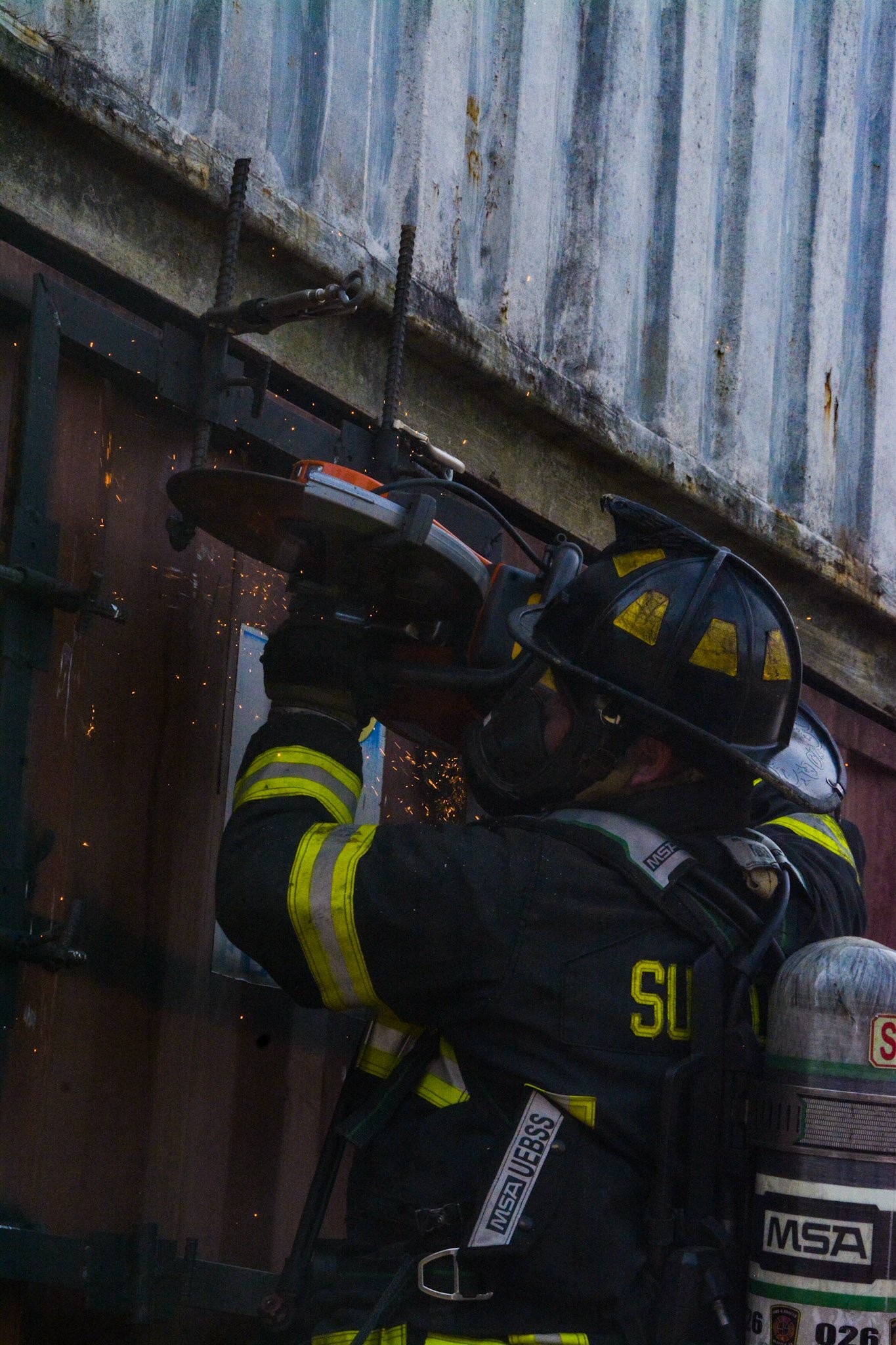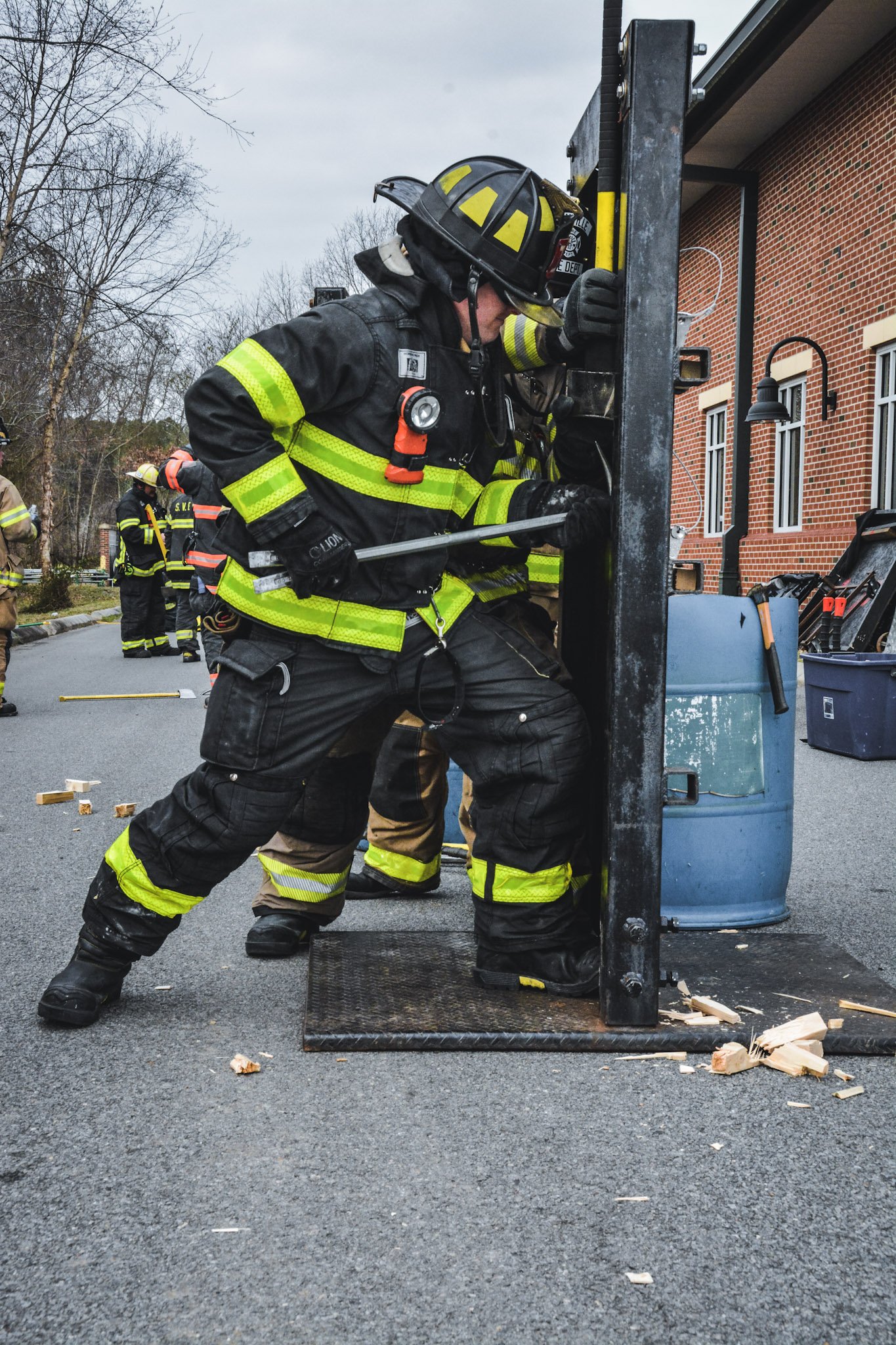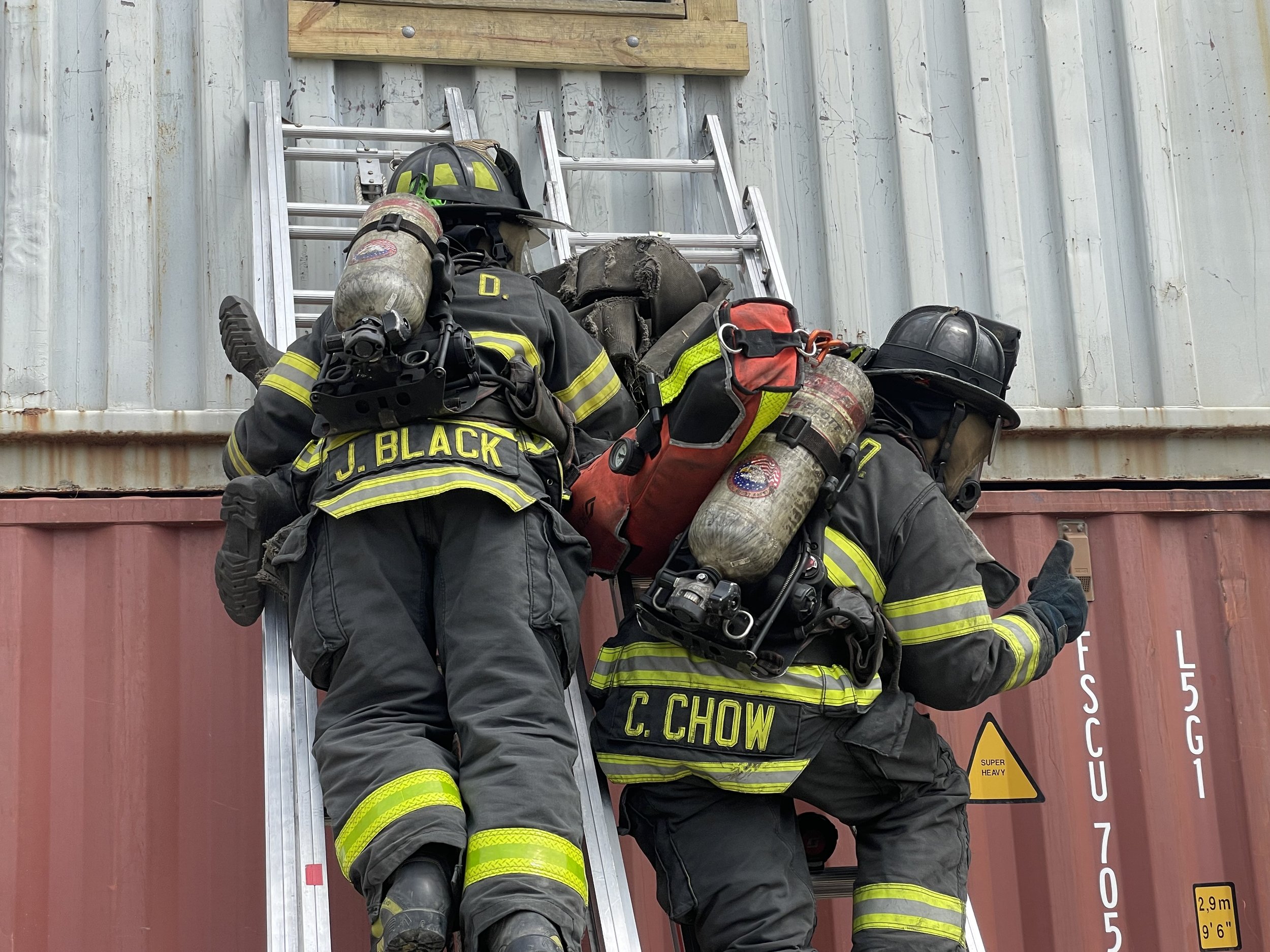1949 American Lafrance In Service from 1980 - 1991.
1973 Mack/Baker 75 ft Aerial scope In Service from 1991 - 2001.
1998 Spartan 95ft Aerial Scope In Service From 2001 - Present
-What to Expect-
Welcome and thank you for your interest in the Smithfield Truck Company Operations class. Whether this is your first time taking this class or multiple times, we like to give all of our students an idea of what to expect before they arrive. First and foremost, this is not a by the book, cookie cutter class. We thrive on challenging our students and providing them with best information and skills possible. We are going to work you hard; you will be tired at the end of this class.
The instructors that we bring in are some of the best in the business from various career and volunteer departments that enjoy teaching and sharing their knowledge and skills. The objective for this weekend is for you to be exposed to outside of the box training and various methods of truck company operations, things that you can't find in a book. Remember this is a street smart class. Don’t be surprised if you get two different answers to the same question that you may have or different ways to achieve a task.
To get the most out of this class, listen to what the instructors have to say with an open mind, and most of all, enjoy you. We encourage you to spread what you've learned in this class with your brothers and sisters in the fire service. The purpose is to spread the word on safe, aggressive truck company operations. Some may argue that you can’t be safe and aggressive at the same time but we beg the differ. Remember; once the fire goes out, most of your other problems go away.
Jason Koepke
Assistant Chief/ Training Officer, Smithfield Volunteer Fire Department
Truck Class History
Back in 2012, after several members attended truck company classes throughout the state, Chief Jason Stallings had the idea of the SVFD putting on a rigorous, hands on truck class to focus on "truck company street tactics". Division Training Chief Jason Koepke took the lead and put together a 1 day classroom/hands on training at SVFD. That class, in a mere 7 years, has turned into a 1 day seminar with speakers from throughout the fire service as well as 2 days of rigorous, non-stop hands on training. We have students from throughout Virginia and have had students attend from as far away as the western part of New York, Tennessee, and Michigan.
The class sports a wealth of instructors from throughout the Hampton Roads area as well as instructors from up and down the east coast. We also have several sponsors to provide equipment for the class as well as raffle gifts for the students. "Real Fire Training", which is a progressive, aggressive training organization has also become an important part of the class, providing instructors as well as props for students. With the variety of instructors also comes a variety of training props, all built by the instructors. We have flat and pitch roof simulators, forcible entry doors, vent/enter/search prop, steel-roll down door prop. A "CAN" prop using live smoke and fire with a focus on can-man duties. This is not all the props or training stations that are in the class but provides a little insight as to what we offer.
So if you're looking for a rigorous, hands-on, down and dirty "street tactics" truck class, this is for you. Our class is offered once a year, usually in the late winter/early spring and is well worth the experience. Keep an eye on the SVFD website, SVFD Truck Company facebook page and this website for information about our upcoming classes.
Hopefully we will see you there!!!!!!!
What is a Truck Company?
Truck companies may sometimes be referred to as "hooks & ladder", an "aerial company", a "snorkel company" or maybe even a "quint". Such labels might partially describe truck company apparatus, but they do not even hint at the planning, personnel, equipment and training that are coordinated in an efficiently operating truck company.
The truck company provides access to, and exits for, all parts of the fire building. Truck companies crews also are responsible for the removal of heat, smoke and gases to allow greater visibly and permit engine company crews to move aggressively and safely within a fire building or exposed buildings. These examples do not by any means include all the duties of a truck company, but they do illustrate two important points about a truck company.
Truck work is required at every fire.
Truck company operations either accompany or precede engine operations.
Truck Company Operations:
Truck company apparatus and equipment have been designed to permit truck company crews to function effectively and quickly in accomplishing the five firefighting objectives.
Rescue victims.
Protect exposures.
Confine the fire.
Extinguish the fire.
Overhaul the fire ground.
All but the last of these objectives are carried out in an atmosphere of flame and smoke. Therefore, it is essential that firefighters understand the nature of fire and the factors that affect its spread, including building construction, type of occupancy, and types of fire load. Through training and experience, truck company personnel must acquire knowledge, skills and judgement in performing the nine basic duties of a truck company:
Rescue/Search
Ventilation
Laddering
Forcible entry
Checking for fire extension
Elevated master streams
Utility control
Salvage
Overhaul
At some fires, it might be necessary for a truck company to perform all these operations, other fires might require only some of these duties. Just as situations vary, procedures for each situation will also vary. With the exception of rescue, the duties are not necessarily performed in the order given above, that depends on the situation of the fire. As you can see though, truck work is physical and demanding. Individual riding positions should be used so that critical tasks are performed simultaneously and in conjunction with the engine company.
1. CHAUFFEUR
Control utilities
Throw ladders
PPV on the structure
3. IRONS
Radio
Irons
Search rope
5. ROOF
Radio
6’ Hook
Appropriate saw
Search rope
2. OFFICER
Radio
Hand tool
TIC
4. OVM (Outside Vent Man)
Radio
6’Hook
Halligan
Search rope
6. CAN MAN
Radio
2 1/2 Water can
6’ Hook/Search rope
